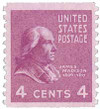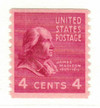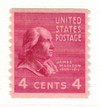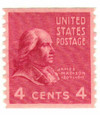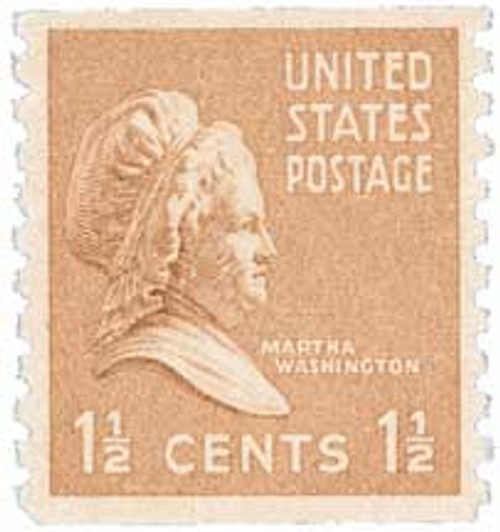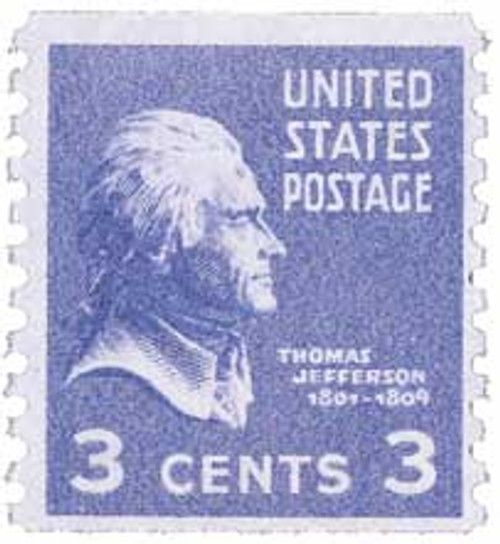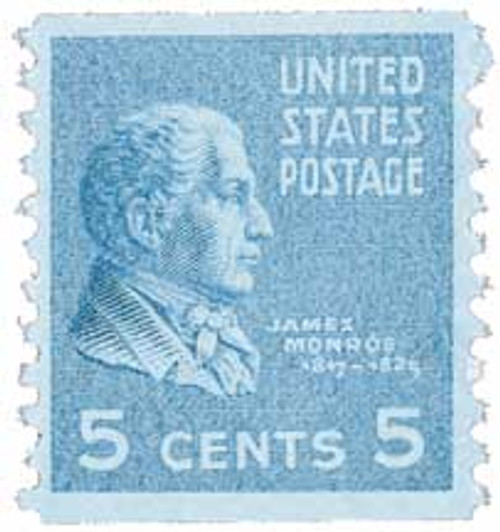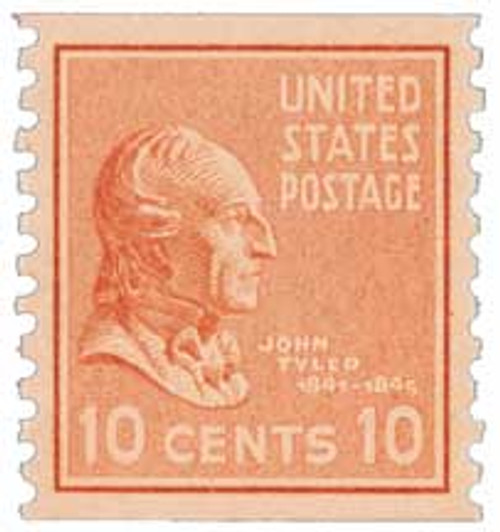
# 843 - 1939 4c James Madison, red violet
4¢ Madison
1939 Presidential Series
Rotary Coil
First City: Washington, D.C.
Quantity Issued: 41,040,000
Printing Method: Rotary Press
Perforation: 10 vertically
Color: Red violet
The series was issued in response to public clamoring for a new Regular Issue series. The series that was current at the time had been in use for more than a decade. President Franklin D. Roosevelt agreed, and a contest was staged. The public was asked to submit original designs for a new series picturing all deceased U.S. Presidents. Over 1,100 sketches were submitted, many from veteran stamp collectors. Elaine Rawlinson, who had little knowledge of stamps, won the contest and collected the $500 prize. Rawlinson was the first stamp designer since the Bureau of Engraving and Printing began producing U.S. stamps who was not a government employee.
4¢ Madison
1939 Presidential Series
Rotary Coil
First City: Washington, D.C.
Quantity Issued: 41,040,000
Printing Method: Rotary Press
Perforation: 10 vertically
Color: Red violet
The series was issued in response to public clamoring for a new Regular Issue series. The series that was current at the time had been in use for more than a decade. President Franklin D. Roosevelt agreed, and a contest was staged. The public was asked to submit original designs for a new series picturing all deceased U.S. Presidents. Over 1,100 sketches were submitted, many from veteran stamp collectors. Elaine Rawlinson, who had little knowledge of stamps, won the contest and collected the $500 prize. Rawlinson was the first stamp designer since the Bureau of Engraving and Printing began producing U.S. stamps who was not a government employee.



